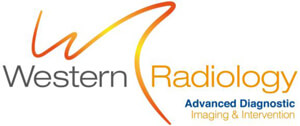What is CTCA?
CT coronary angiography (CTCA) is an anatomical test for coronary atheroma – essentially, a non-invasive version of standard coronary angiography.
How good is CTCA at evaluating for coronary disease?
CTCA is the most sensitive non-invasive tool in current practice for obstructive coronary artery disease. Numerous clinical studies reproducibly show a sensitivity for obstructive coronary artery disease of >95% and negative predictive value of >99%.
What do international cardiac societies say about CTCA?
All major cardiac society guidelines list CTCA as an appropriate tool for the evaluation of chest pain / suspected angina. The most recently updated guidelines are the 2016 British NICE guidelines, which now position CTCA as the first-line cardiac investigation for stable chest pain of recent onset.
How big is the radiation dose from CTCA?
With modern scanners and good technique, radiation doses are low – at our Cockburn and Madeley practice typically in the region of 1-2.5 mSv. Putting this in context, the average yearly background radiation dose is ~3mSv, and the dose from an MPS stress test is typically 8 to 17.5mSv.
What is the difference between Calcium scoring and CTCA?
Calcium scoring is an extremely sensitive test for detecting any coronary disease at all, but unlike CTCA it does not tell you whether the disease is obstructive.
What is the difference between stress testing and CTCA?
CTCA looks for anatomical evidence of coronary disease and its severity by direct visualisation. By contrast, stress testing functionally infers obstructive disease by trying to detect ischaemia.
How do I choose between CTCA and stress testing?
Both are good tools to evaluate stable chest pain where a cardiac cause is considered. Current literature suggests CTCA may have greatest utility in patients where the probability of coronary disease is low or intermediate due to high negative predictive value – i.e. it is an excellent ‘rule-out’ test, whereas a negative stress test doesn’t always rule out angina. Stress testing may be the more useful test however when the probability of angina is high. Having said that, in real-world practice it is often patient-related factors that ultimately dictate the choice (poor mobility or poor echo windows suggest CTCA, renal impairment or severe asthma suggest stress testing – see next for more info).
What patient preparation is required?
Imaging a beating heart at low radiation dose requires a slow and regular heart rate. We do this by giving beta-blockers (+/- ivabradine), and GTN to dilate vessels, and the CT machine times its ‘camera-shutter’ to the patient’s ECG. Patients are asked to stay well hydrated, and to avoid caffeine / stimulants.
In which patients is CTCA not as reliable?
Patients with fast AF or very frequent ectopy are challenging. Morbid obesity will incur higher radiation dose. Patients with true beta-blocker intolerance (e.g. severe asthma) who also have fast heart rates may not be suitable unless responsive to ivabradine. Severe renal impairment often precludes contrast CT. Please consider discussing such patients with our team before requesting.
What should I do if the CTCA shows atheroma?
If atheroma is present, the report will explicitly state whether it is felt to be obstructive. If not felt obstructive, the high negative predictive value of CTCA confers strong diagnostic certainty that the symptoms are not coronary in origin. Obstructive disease will merit further evaluation, although it is noteworthy that disease often ‘looks worse’ on CT coronary angiography than on invasive angiography – our reporting cardiologist will discuss each such individual case with you.
